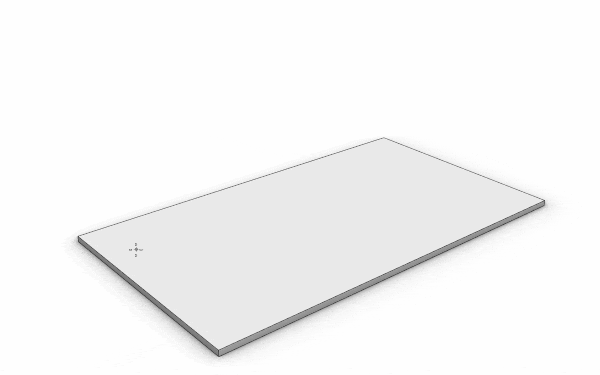Your Cart is Empty
Customer Testimonials
-
"Great customer service. The folks at Novedge were super helpful in navigating a somewhat complicated order including software upgrades and serial numbers in various stages of inactivity. They were friendly and helpful throughout the process.."
Ruben Ruckmark
"Quick & very helpful. We have been using Novedge for years and are very happy with their quick service when we need to make a purchase and excellent support resolving any issues."
Will Woodson
"Scott is the best. He reminds me about subscriptions dates, guides me in the correct direction for updates. He always responds promptly to me. He is literally the reason I continue to work with Novedge and will do so in the future."
Edward Mchugh
"Calvin Lok is “the man”. After my purchase of Sketchup 2021, he called me and provided step-by-step instructions to ease me through difficulties I was having with the setup of my new software."
Mike Borzage
Design Software History: The Evolution of Architectural Design Software: From Manual Drafting to ArchiCAD and Beyond
May 20, 2025 8 min read


Introduction
Architectural design faced significant challenges before the advent of digital tools, when processes were heavily reliant on manual drafting and physical models. Professionals in the architecture field often encountered challenges such as inaccuracies in measurements, difficulties in visualizing spatial relationships, and the slow pace of iterative design improvements. In traditional settings, architects had to meticulously redraw plans for every modification, an arduous task that slowed innovation and encouraged a reliance on established norms rather than experimentation. The pre-digital era demanded immense effort and time, requiring endless revisions that were not only resource-intensive but also prone to human error. In this context, the emergence of pioneering computer-aided design technologies promised to alleviate many of these longstanding issues, charting a new course toward precision and efficiency.
Architectural Challenges in the Pre-Digital Era
Prior to modern software solutions, the field of architecture was dominated by manual drafting techniques and intricate hand-drawn plans. There was a noticeable struggle to integrate structural engineering specifications with aesthetic vision, and iterative changes often required redrawing vast portions of a plan. Designers spent long hours laboring over blueprints under tight deadlines, facing significant hurdles in ensuring that every detail was accurately represented. This era was marked by the constraints of relying on paper-based methods that did not easily allow for error correction or experimentation. As projects grew larger and more complex, the necessity for a more flexible and dynamic design approach became increasingly evident among professionals in the industry.
Graphisoft and the Emergence of ArchiCAD
It was in this environment of challenge and opportunity that Graphisoft emerged as a global leader in digital design technology. Founded by innovators who recognized the transformative potential of computer-aided design, Graphisoft revolutionized the architecture industry with its introduction of ArchiCAD. ArchiCAD represented one of the earliest fully integrated architectural design software solutions that harnessed the power of digital computation to streamline drafting, modeling, and project management processes. With its ability to seamlessly transition from 2D drafting to advanced 3D modeling, ArchiCAD provided architects with a sophisticated tool that enhanced visualization and significantly reduced the margin for error. This transformative tool not only sped up the design process but also allowed for more extensive exploration of design alternatives, setting a new industry benchmark for creativity and efficiency.
Historical Evolution of ArchiCAD
The development of ArchiCAD is rooted in a series of technological breakthroughs and visionary ideas that redefined the boundaries of traditional architectural design. During its formative years, ArchiCAD quickly established itself as one of the most forward-thinking solutions available to architects, steering the industry away from outdated manual methods towards a digitally empowered future. Throughout its evolution, key milestones were reached, such as the transition from rudimentary 2D drafting tools to comprehensive 3D modeling and Building Information Modeling (BIM). These evolutionary steps were driven by rapid advances in computer hardware, emerging graphical user interfaces, and the continuous incorporation of user feedback. As architects began to demand more powerful and integrated tools, Graphisoft responded by constantly updating and refining ArchiCAD’s capabilities, adding features that not only streamlined design processes but also opened up entirely new possibilities.
Early Development Milestones and Technological Breakthroughs
ArchiCAD’s developmental timeline is marked by several landmark releases that each introduced a new wave of technological innovation. In its early versions, ArchiCAD was a trailblazer in combining CAD functionalities with early forms of BIM, bridging the gap between two-dimensional drawings and three-dimensional representations. Over time, each successive version of ArchiCAD incorporated:
- Enhanced user interfaces that made digital drafting more intuitive
- Advanced modeling tools that permitted complex structures to be visualized in 3D
- Increased interoperability with other design and engineering software
- Streamlined workflows that reduced the time taken for design revisions
The Role of Graphisoft’s Founders and Innovation Drivers
The visionary leadership behind Graphisoft played a pivotal role in ArchiCAD’s journey from a novel concept to a fully mature design tool. From its inception, the company was built on a strong foundation of technical expertise and a deep understanding of the architectural discipline. The founders of Graphisoft recognized the latent potential within digital tools and actively engaged with the design community to solicit feedback for continuous improvement. They fostered a culture of open innovation where engineers, designers, and architects collaborated closely, ensuring that every new feature was meticulously tested against real-world scenarios. This commitment to innovation made ArchiCAD a platform that evolved in tandem with the emerging demands of the architectural world. Their work highlighted the importance of a user-centered approach, paving the way for the transformation of design paradigms that transformed how architects visualized and executed their projects.
Adoption of New Design Paradigms and User Feedback Integration
The evolution of ArchiCAD was marked not only by technological breakthroughs but also by a deep integration of user feedback and the adoption of new design paradigms. As architects increasingly embraced digital tools in their practice, their insights became critical to the iterative design process of ArchiCAD. Graphisoft established feedback mechanisms that allowed users to contribute to the software’s ongoing development. This dynamic dialogue resulted in the creation of a tool that reflected the evolving needs of the industry, promoting the transition from traditional 2D drafting to comprehensive 3D modeling environments. The iterative development cycle, characterized by frequent updates and refinements, enabled ArchiCAD to consistently address the pitfalls of older systems while anticipating future trends. Additionally, the adoption of BIM as a core principle meant that every design component within ArchiCAD was built with the idea of a fully integrated, collaborative model in mind. Through this synergy between practical user insights and advanced technological capabilities, ArchiCAD emerged as a software platform that not only met but exceeded the expectations of a rapidly evolving industry.
Impact on Architectural Design and Industry
ArchiCAD’s introduction heralded a revolutionary departure from traditional architectural practices. Prior digital design tools largely confined architects to two-dimensional representations, which often failed to capture the full nuance and complexity of real-world structures. However, ArchiCAD shattered these limitations by providing robust 3D modeling capabilities that enhanced the precision of designs while maintaining clarity and detail. Its powerful visualization tools empowered architects to simulate and interact with their designs in real time, offering a level of immersion that was previously unimaginable. This innovative approach helped bridge the gap between conception and realization, ensuring that design intentions were clearly understood not only by architects but also by builders, engineers, and clients. By enabling comprehensive coordination and communication among multiple stakeholders, ArchiCAD facilitated the emergence of more cohesive and collaborative design environments.
Transition from 2D Drafting to 3D Modeling
The shift from traditional 2D drafting to sophisticated 3D modeling was one of the most significant transformations driven by ArchiCAD. With its integrated CAD and BIM functionalities, the software provided architects with an unprecedented ability to visualize structures in three dimensions, capturing both aesthetic and functional details intricately. This transition allowed designers to address spatial relationships, lighting, and material properties in a realistic manner, ensuring that the final outcome closely matched the envisioned design. Some of the key elements that contributed to this transformation included:
- Enhanced digital rendering capabilities enabling detailed texture and material visualization
- Intuitive interface designs that lowered the barrier for entry into complex 3D modeling practices
- Integrated simulation tools that allowed designers to virtually test structural integrity and performance
Influence on Collaborative Design Processes and Industry Standards
A significant legacy of ArchiCAD is its profound influence on collaborative design processes and the establishment of modern BIM standards. As design projects grew in complexity, effective collaboration across various disciplines became essential. ArchiCAD provided a shared platform where architects, structural engineers, and other stakeholders could work concurrently on a single model, greatly enhancing communication and coordination. This collaborative capacity not only minimized errors caused by miscommunication but also reduced redundant rework, ultimately saving both time and resources. Furthermore, the software promoted integrated workflows that brought together design, documentation, and analysis in a unified environment. Key features that advanced collaborative processes included:
- Real-time data updates accessible by all team members
- Integrated version control systems that tracked modifications and improvements over time
- Interoperability with other design and engineering software to facilitate seamless collaboration
Conclusion
The journey of ArchiCAD from its inception to its current status as an industry-leading tool in architectural design is a testament to human ingenuity and the relentless pursuit of innovation. Throughout its evolution, ArchiCAD has consistently redefined the rhythms of architectural design by overcoming the challenges of manual drafting and ushering in a new era of digital modeling and BIM integration. Its ability to provide detailed three-dimensional designs, support complex collaborative workflows, and integrate feedback from the design community has not only transformed architectural practices but also elevated the standards of the entire industry. Beyond its technical achievements, ArchiCAD stands as a powerful symbol of a shift in design philosophy – from isolated work processes to expansive, integrated, and fluid design environments.
Historical Significance and Enduring Impact
Reflecting on its storied history, ArchiCAD has repeatedly proven its worth as an innovative platform that adapted to changing technological landscapes and user demands. The software not only anticipated the needs of a modern, digital age but also played a key role in shaping industry best practices. Its influence extends beyond the realm of architectural design to inform broader conversations about digital transformation in fields as diverse as engineering, construction, and product visualization. With each iterative release, ArchiCAD reaffirmed the importance of user-centric development, ensuring that its functionality evolved alongside the rapidly changing requirements of design professionals. The legacy of Graphisoft’s founders and the visionary development teams serves as a powerful reminder that technological breakthroughs, when aligned with a deep understanding of user needs, can drive lasting change. As the design community continues to embrace digital methods, the enduring contributions of ArchiCAD stand as a benchmark for what is possible when innovation and practicality intersect.
Future Perspectives and Ongoing Influence
Looking forward, the evolution of ArchiCAD represents a continuing promise towards innovation in design software. The ongoing development and enhancements within ArchiCAD indicate a commitment to staying at the forefront of technological advancements. As emerging technologies such as virtual reality, augmented reality, and artificial intelligence begin to reshape the design landscape, ArchiCAD is positioned to integrate these advancements seamlessly into its platform. The influence of ArchiCAD on the industry is expected to grow, as architects and engineers alike benefit from its refined functionalities and collaborative features. With a robust community of users and a history of proactive adaptations to technology trends, ArchiCAD remains not only a reflection of past triumphs but also a beacon for future innovations within the ever-evolving domain of architectural design. This forward-looking approach underscores a broader commitment to a future where technology continuously empowers architects to push the boundaries of creativity and functionality in their work.
Also in Design News

Enhance Your Workflow with Custom Parametric Walls in VisualARQ 3
October 30, 2025 5 min read
Read More
Cinema 4D Tip: Lock Framing Early with Cinema 4D Safe Frames and Aspect Overlays
October 30, 2025 2 min read
Read More
ZBrush Tip: Conservative Projection Workflow for Artifact-Free Detail Transfer
October 30, 2025 2 min read
Read MoreSubscribe
Sign up to get the latest on sales, new releases and more …


